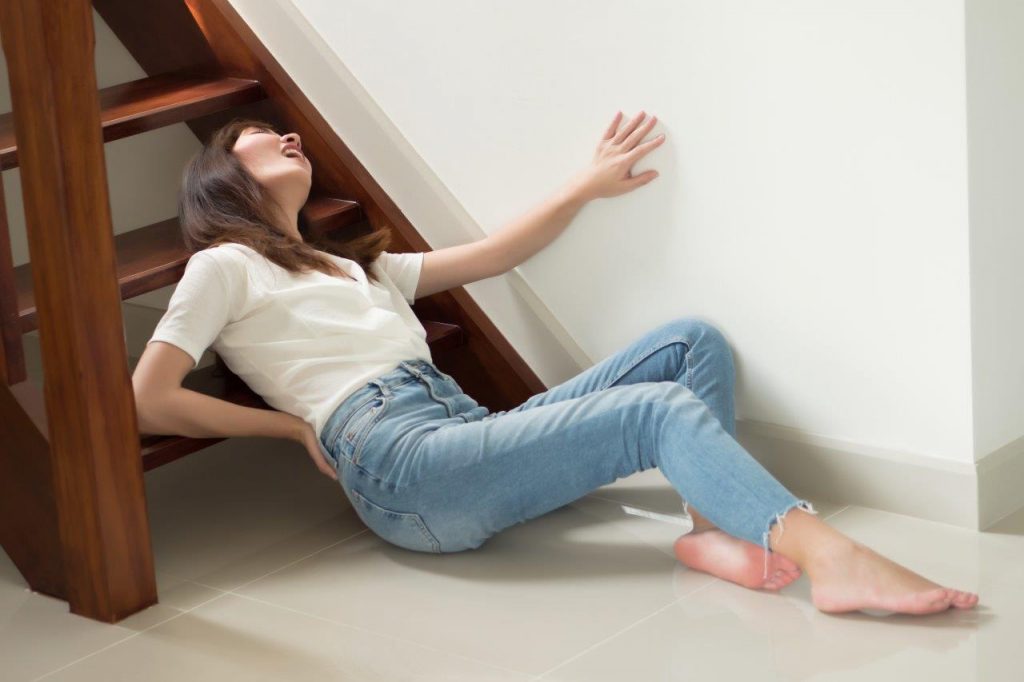
Whether it’s slipping on the stairs, misstepping somewhere in the home, losing our balance, or being fooled by a misleading visual perception, falls happen in our homes – we can’t totally prevent them
Falls happen. There is no getting around it. Even if we stay in bed all day, attempt to remain seated, or try not to move, it is still possible to fall. It may not be a great distance that we fall such as from an object we are standing on to the ground or floor, but it can be a fall just the same.
Even a slip or loss of balance can be tricky.
Falls are inevitable. We talk a lot about falls prevention and in avoiding them. The fact is that falls cannot be prevented as in doing away with them. We can get vaccines and inoculations to prevent various contagious or infectious diseases, but we cannot ward off falls completely – only partially.
Because there are so many factors contributing to a person’s loss of balance or falling sensation, it is difficult to address all of them. However, the underlying issues fall into two areas: the physical setting and the human response.
Let’s talk about the physical setting because this is the most apparent and what comes to mind when we discuss safety and access with a home. Four of the biggest issues affecting falls and falling occurrences are flooring, access points (including hallways, doorways, and steps), lighting, and clutter or stuff in the way of our passage.
Flooring looms large because it’s such a large part of our interior space and often something we don’t think much about. Flooring can present several issues. It can be too glossy which produces a sheen or glare that affects our vision and can cause us to misjudge an area or to misstep when we are trying to avoid what appears to be a wet area but isn’t. The gloss can also be indicative of slipperiness or a low coefficient of friction that means the floor – particularly when damp or wet – is prone to causing us to slip on it – barefoot, wearing slippers or shoes, or with socks. Scatter rugs that aren’t well anchored and free or ripples also slip on such floors and can exacerbate slippery conditions,
If people still have carpeting, this can present issues because of the busyness of the patterns, the boldness or lack of contrasts in the colors, the wear that it receives, and the way it tends to stretch and ripple over time – leading to a person catching their foot as they attempt to walk across it. Also, carpeting tends to give or compress more than hard surfaces adjacent to it and may present a balance issue as one transitions from one surface to the next.
Small or tight doorways and hallways can present issues for people as they attempt to maintain their balance or sense of direction – walking unaided or while using a walker, cane, crutches, or wheelchair. Often there is a minimal passage area or no area adjacent to the doorway or hallway to prepare to enter or use the space safely.
When it comes to steps – whether they are called stairs or steps, the meaning is the same and these two terms are used interchangeably – there are many issues that can present balance challenges. Vision may limit one’s ability to see where to place their foot or where one tread starts and stops and the next one begins – especially when descending the stairs. Often the treads are slipery, either with carpeting or a painted or polished surface.
Just maintaining one’s balance while ascending or descending stairs can lead to falls or stmbles.
In terms of lighting, adequate lighting – enough to illuminate the entire area without creating harsh shadows – can allow us to see what is in a space and avoid stumbling or tripping over an obkject on the floor because we couldn’t see it clearly or recognize that it was there. Objects that jut into a passageway that are partially concelaed in the shadows will come to light also. We cannot emphasize strongly enough the importance of sufficient lighting in an interior living space , especially as people are aging and it often takes more light to see what had been more comfortable to recognize at an earlier age.
That brings us to clutter. Without getting into a discussion of how much stuff we amass and retain as we go through life – that is a subject for another time – suffice it say that the way we have objects stored on the floor, on top of counters and furniture, or items that are stuffed into closets that could come tumbling out unexpectedly when the door is opened or they are bumped while reaching for something else, can cause us to lose our balance, stmble, or trip over an object.
None of us consciously attempts to create hazards for ourselves in our homes and yet they happen. The more we are aware of some of these most problematic areas, the safer our homes can become and the fewer falls, stumbles, and tumbles we will have to experience.
